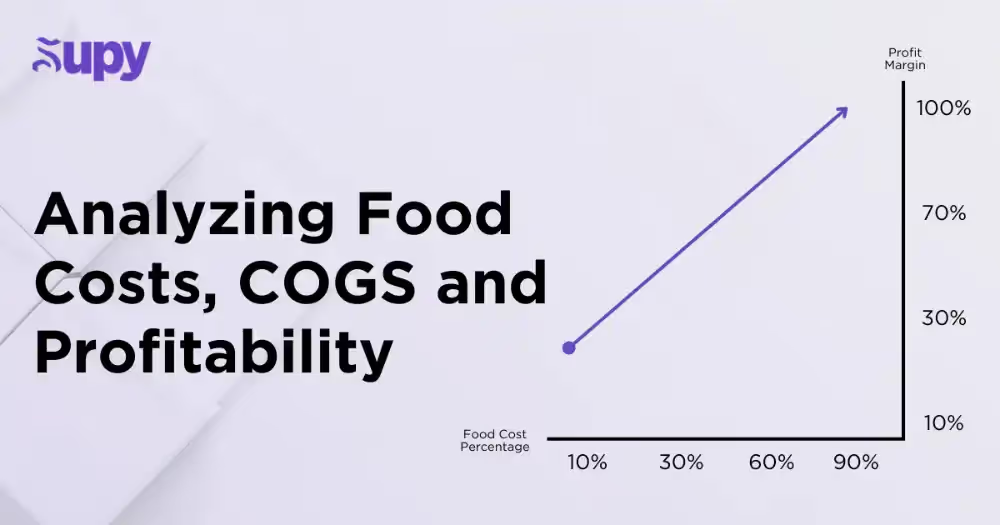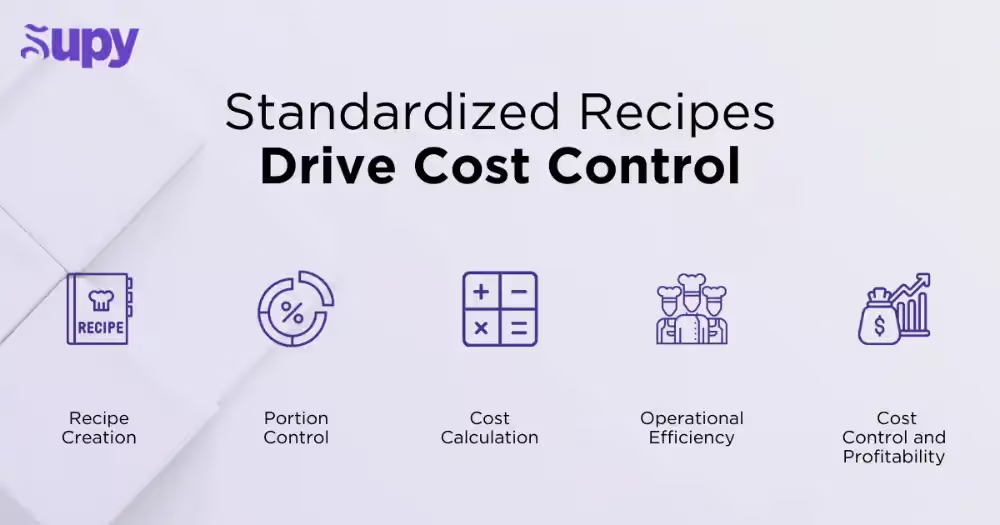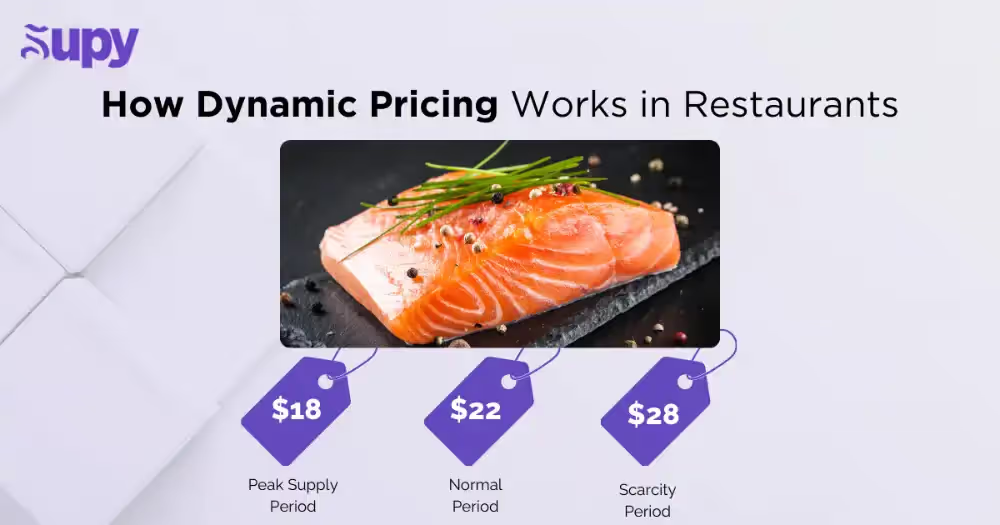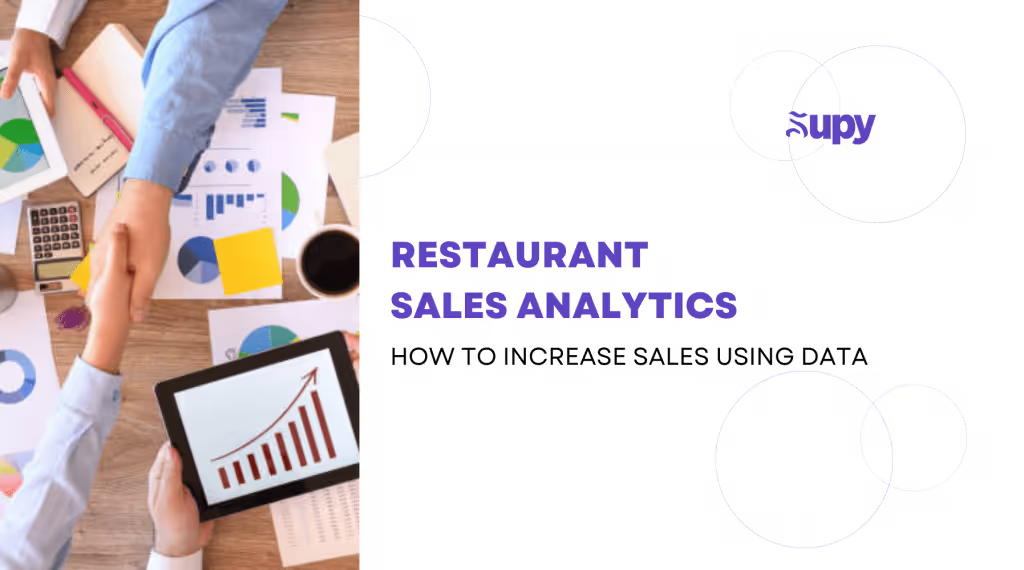Designing a Profitable Menu with Sustainability in Mind

usiSustainability is shaping the future of the hospitality and F&B industry. Customers are paying closer attention to how restaurants source ingredients, manage waste and design their menus. A well-planned sustainable approach sets your business apart and drives revenue growth, leading to higher returns on investment.
As a restaurant or F&B chain owner, you might be wondering how to keep up with these trends while staying profitable. Small steps can lead to big changes, and it all starts with your menu. Since food waste is one of the biggest challenges in the industry, designing a menu that prioritizes sustainable ingredients and minimizes waste can have a huge impact on the environment as well as your operations.
In this blog, we’ll explore:
- The Connection Between Sustainable Menu Design and Profitability
- An Analysis of Restaurant Food Costs and Profitability
- Steps to Design a Profitable and Sustainable Menu
- How to Incorporate Sustainability Without Compromising Profitability
- Conclusion
- About Supy
Learn the best menu engineering practices to manage restaurant food costs while taking meaningful steps toward sustainability.
1. The Connection Between Sustainable Menu Design and Profitability
“Sustainability drives profitability”
Sustainable menu design is improving the financial landscape for restaurants. As businesses focus on reducing waste and optimizing ingredient usage, they are finding that sustainability as a strategy for financial growth. The connection lies in how sustainable practices directly lower costs, attract loyal customers, and create long-term value.
Research from Menu Cover Depot reveals that effective menu engineering has the potential to increase restaurant profits by 10–15%. These profits stem from strategies like reducing food waste, which is one of the largest contributors to unnecessary costs in the industry.
For example, replacing rarely ordered items with dishes that use versatile, high-margin ingredients leads to better resource utilization. This not only prevents spoilage but also streamlines inventory management, lowering food costs and saving both time and money.
Sustainable menu design also helps optimize menu prices by aligning them with the actual food cost of each dish. A well-structured menu focuses on balancing customer value with profitability, ensuring that every dollar spent by the restaurant delivers maximum return.
For example, highlighting high-margin, eco-conscious options increases the perceived dollar value for diners, who are often willing to pay more for ethically sourced or environmentally friendly ingredients.
Additionally, sustainable menu design attracts a growing segment of diners willing to spend more for eco-conscious options. Restaurants offering menus that highlight ethical sourcing or environmentally friendly ingredients often see higher average ticket sizes, as these customers perceive greater value in supporting such practices. Over time, this translates into steady revenue growth, stronger brand loyalty, and an enhanced reputation in the market.
The financial benefits extend beyond operational savings and increased sales. A well-executed sustainable menu positions a restaurant to outperform competitors by appealing to modern consumer values while maintaining a focus on efficiency. This combination creates a solid foundation for both immediate profitability and long-term success in a highly competitive industry.
2. An Analysis of Restaurant Food Costs and Profitability

Restaurant food costs make up a significant portion of operational expenses and play a key role in determining profitability. These costs include all raw materials and ingredients used to prepare menu items, which are tracked using metrics like Cost of Goods Sold (COGS) and food cost percentage.
COGS tells you how much you spent on food, while Food Cost Percentage tells you how efficiently you're using food relative to your revenue. Both metrics are crucial for effective cost control and profitability analysis in the restaurant business.
These metrics allow restaurant owners to manage food cost control effectively and keep their business sustainable.
COGS measures the total cost of ingredients used during a specific period and is calculated as:
COGS = (Beginning Inventory + Purchases) − Ending Inventory
This metric helps restaurants determine how much they are spending on raw materials to produce their dishes. Maintaining COGS within 28–35% of total sales is generally ideal to keep a restaurant profitable.
The food cost percentage is another essential measure that highlights the relationship between the cost of preparing a dish and its selling price. For instance, if a dish costs $6 to make and is sold at a menu price of $24, the food cost percentage would be 25%. This ensures that each dish aligns with profitability goals while considering portion sizes and ingredient costs.
Food cost percentage formula:
Food Cost Percentage = (COGS / Total Sales) × 100
Restaurant owners often need to calculate food cost percentage for individual dishes to analyze their profitability more closely. For example, calculating the cost per serving allows a better understanding of which menu items contribute most to revenue. Items with lower costs and higher margins offer opportunities to maximize profits without compromising quality.
Regularly analyzing these metrics provides restaurant owners with valuable insights into spending patterns and ingredient usage. This understanding is essential to manage food cost control, maintain profit margins, and ensure the restaurant remains competitive. A strategic approach to food percentage cost helps align menu pricing with operational efficiency, making long-term planning more effective and keeping the restaurant profitable.
3. Steps to Design a Profitable and Sustainable Menu
Creating a menu that balances profitability and sustainability requires careful planning and expert insights. Each decision, from ingredient selection to menu updates, directly impacts your financial outcomes and environmental footprint.
Here are some strategies to design a menu that drives profitability while embracing sustainability:
1. Analyze Current Menu Performance
Conducting a thorough menu analysis is crucial for identifying opportunities to optimize your offerings. Use sales data to determine menu item popularity and focus on profitable items—dishes with high demand and low costs. Evaluate food cost percentages for each dish to ensure ingredients align with pricing, and calculate the contribution margin to identify items that bring the highest revenue relative to their costs. High-performing items, or "stars," should take priority on your menu as they drive profitability.
On the other hand, low-performing items, often called "dogs," can drain resources and reduce efficiency. These dishes typically have low menu item popularity or high preparation costs, making them unsustainable. Adjust recipes or remove these items to make room for more profitable items that align with your business goals and resonate with customers. This strategic approach makes your menu remains cost-effective and competitive.
2. Prioritize Seasonal and Local Ingredients
Building your menu around seasonal menu items and locally sourced food supplies can significantly lower costs while enhancing sustainability. Seasonal produce is typically fresher, more affordable, and has a smaller environmental impact due to reduced transportation and storage requirements. Using locally sourced ingredients also supports nearby farmers and resonates with eco-conscious diners, giving your menu an added appeal.
Sourcing seasonal ingredients helps streamline your food inventory by reducing overstocking and spoilage, which can directly lower your ingredient cost. This, in turn, improves your actual food cost percentage, ensuring your dishes remain both profitable and sustainable. A seasonal menu allows you to adjust offerings based on availability, keeping costs under control while maintaining variety and quality for your customers.
3. Grow Your Own Ingredients
Growing your own herbs, vegetables, or other ingredients on-site is a great way to enhance sustainability and manage expenses. You can also partner with local urban farms for similar benefits. Producing fresh ingredients in-house increases the inventory value of what your restaurant owns. It also reduces dependence on external suppliers, lowering the total food cost for frequently used items like basil, mint, or lettuce.
This practice helps reduce costs tied to transportation and packaging. It minimizes what your restaurant spends on sourcing and ensures a consistent supply of fresh produce. Growing your own ingredients also highlights your commitment to sustainability. This appeals to eco-conscious customers and enhances your restaurant’s brand image. Even a small herb garden can make a noticeable difference.
4. Standardize Recipes for Cost Control

Standardized recipes are essential for maintaining consistent portion sizes and managing costs for each menu item. Using a clear food cost formula allows you to calculate the exact cost of food items, preventing the overuse of expensive ingredients. A detailed breakdown of each recipe ensures that portions remain uniform, reducing waste and keeping costs predictable.
Menu engineering software can simplify this process by allowing you to create and store recipes for easy replication. These tools help kitchen staff follow recipes accurately, improving operational efficiency and minimizing errors. Standardization not only ensures consistency but also supports better cost control, keeping your menu profitable and sustainable.
5. Use Overlapping Ingredients
Designing menu items with shared ingredients minimizes waste and simplifies inventory management. For instance, spinach can be used in salads, pasta dishes, and soups, maximizing its utilization across a variety of dishes. This strategy reduces the risk of spoilage and helps control costs.
Using overlapping ingredients also lowers a restaurant's overhead by streamlining purchases and storage needs over a specific time period. It ensures efficient inventory use and minimizes the need to stock rarely used items. This approach not only cuts waste but also makes operations more cost-effective and sustainable.
6. Reduce Portion Sizes Thoughtfully
To control costs, adjust portion sizes for high-cost ingredients while maintaining customer satisfaction. For example, offering a smaller portion size of premium proteins like steak can be balanced with creative sides such as roasted vegetables or grains. This approach reduces waste and ensures the dish’s total cost stays within profitable limits.
Carefully managing portions helps restaurants achieve their ideal food cost by using ingredients more efficiently. Thoughtful portioning keeps meals visually appealing and satisfying while preventing overuse of expensive components. This strategy maintains perceived value for customers and supports sustainable, cost-effective operations.
7. Use Dynamic Pricing for Flexibility

Dynamic pricing helps restaurants adapt to fluctuating ingredient costs by allowing flexibility in how they price menu items. For example, seafood or fresh produce prices often change with seasonal availability and market demand. Adjusting these prices ensures you cover costs and maintain profitability while staying competitive.
This strategy enables you to set menu prices that reflect current market conditions rather than relying on fixed pricing. Offering lower prices during peak supply periods can attract more customers, while increasing prices when ingredients are scarce keeps margins healthy. With dynamic pricing, your restaurant remains aligned with industry averages while effectively managing cost volatility.
8. Regularly Review and Refresh the Menu
Revisiting your menu on a regular basis helps you stay competitive in the evolving restaurant business. As a restaurant owner, analyzing trends, customer preferences, and ingredient costs allows you to make informed updates. Seasonal changes let you add fresh, cost-effective dishes while removing items that increase your restaurant's food cost percentage or fail to perform well.
A dynamic menu controls other costs and ensures dishes align with profitability goals. This approach helps increase profits by focusing on items that resonate with customers and efficiently use available resources, keeping your menu relevant and financially sustainable.
4. How to Incorporate Sustainability Without Compromising Profitability
While keeping your menu sustainable is key, it’s also important to adopt additional practices that connect sustainability with long-term profitability. These strategies not only help reduce your operating expenses but also improve customer satisfaction and position your restaurant as a leader in responsible dining.
- Efficient Waste Management: Reducing food waste is one of the most effective ways to lower your restaurant food cost while making your menu more sustainable. Track which ingredients are often wasted, whether during preparation or as leftovers from customers. Use creative approaches like turning vegetable scraps into broths or day-old bread into croutons to reduce food waste and optimize usage. Offering flexible menu options, such as portion size choices, also helps customers order based on their appetite, minimizing waste and boosting satisfaction.
- Precise Inventory Management: Keep your total food costs in check by auditing your inventory regularly and using real-time tracking systems. Avoid overordering and spoilage, which not only inflate costs but also waste valuable resources. Monitoring ingredient usage ensures your stock aligns with demand, maximizing the ratio of total food sales to costs. Streamlined inventory systems also help maintain efficiency, reducing both waste and unnecessary spending.
- Sustainable Packaging Solutions: Switch to eco-friendly packaging like compostable containers, recyclable materials, or reusable takeout options. While these alternatives may have higher upfront costs, their positive impact on your brand can justify modest price adjustments. Sustainable packaging resonates with environmentally conscious customers, and the resulting loyalty often offsets the additional expense. Packaging that aligns with industry benchmarks for sustainability reinforces your commitment to reducing your environmental footprint.
- Adopting Energy-Efficient Equipment: Replacing older appliances with energy-efficient options, such as induction stoves or ENERGY STAR-certified refrigerators, significantly reduces operating expenses. Although the initial investment can seem steep, these appliances save money on utility bills over time. Highlighting the use of sustainable equipment also improves your brand appeal, attracting eco-conscious diners who value businesses prioritizing green initiatives.
- Offer Incentives for Sustainable Choices: Encourage customers to participate in sustainability efforts through small incentives. Discounts for bringing reusable containers or promotions on sustainable menu options, such as plant-based dishes, are great examples. These actions not only drive sales of high-margin dishes but also align with customer values. Incentives that reduce waste and promote eco-conscious dining contribute to both profitability and sustainability.
5. Conclusion
Sustainability and profitability go hand in hand in today’s restaurant industry, offering opportunities to streamline operations and enhance customer loyalty. Effective menu engineering helps restaurants lower costs, reduce waste, and create high-margin dishes that resonate with modern diners. Strategies like using seasonal ingredients, managing portion sizes, and adopting sustainable practices not only improve efficiency but also increase sales and strengthen a restaurant’s brand. With the right approach, any restaurant business can achieve financial success while making a positive impact on the environment.
6. About Supy
Supy empowers restaurants to design profitable menus and manage inventory with unmatched precision. Our advanced menu engineering software allows you to create accurate and replicable recipes while ensuring profitability. With features like real-time ingredient cost tracking, recipe profitability monitoring, and a built-in cost simulator, Supy helps you optimize menu prices and keep your food cost percentages under control. You’ll never sell at a loss, and finding the perfect pricing sweet spot becomes effortless.
Beyond menu design, Supy simplifies operations with its inventory management system. Track stock in real time, reduce variance, and save hours with parallel counting and automated alerts. Supy’s tools help you minimize waste, control costs, and improve efficiency, making it easier to maintain a balance between sustainability and profitability.
Book your personalized demo and start building a more profitable, sustainable restaurant today.







